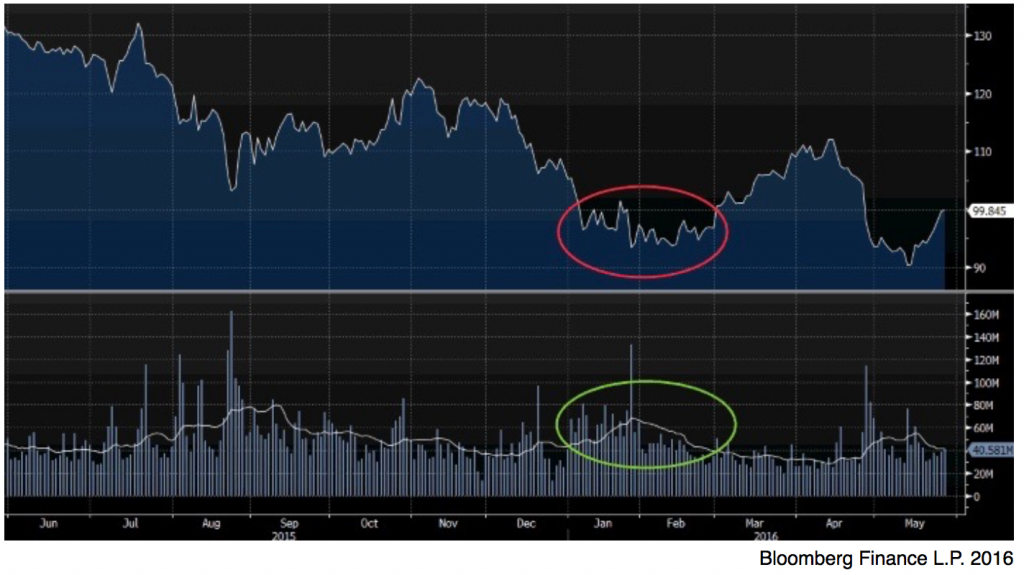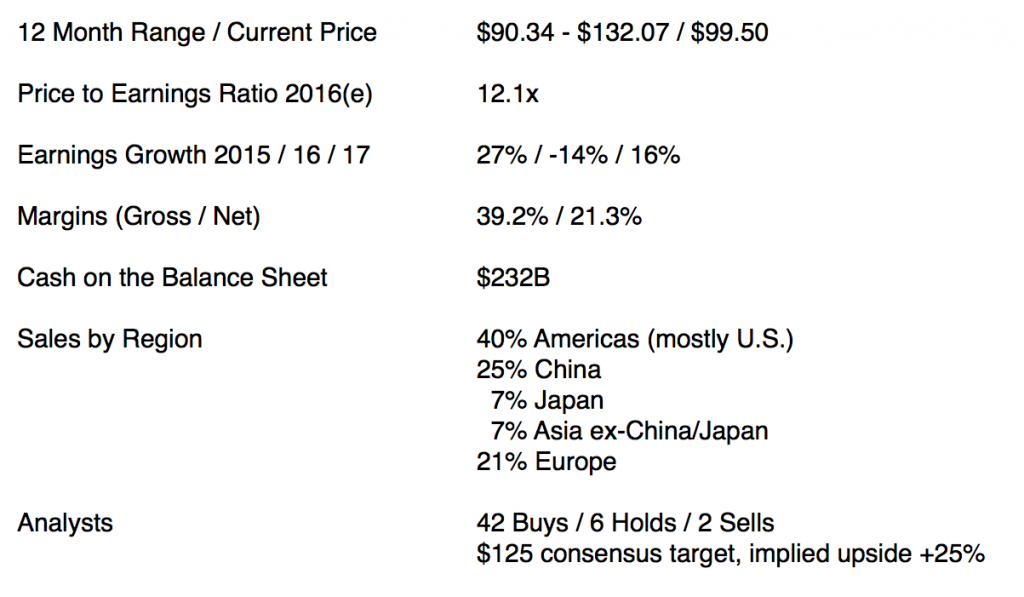Growth Where Art Thou?
4 Countries Apples Needs to Conquer
- Buying by Apple’s top 25 shareholders during Q1 downturn exceeded selling 3 to 1
- Apple accounts for 13.4% of global smartphone sales according to IDC
- China and India represent a market potentially 8 times larger than the U.S.
- Every 1% gain in market share raises Apple net income by half a billion dollars
Apple CEO Tim Cook has flown the coop, and it’s about time. Two weeks after reporting Apple’s first quarterly revenue decline in 13 years Mr. Cook fired up the iJet for a high octane global scouting mission. He spent two days in China, four days across India and quick layover in Amsterdam, where he joked about spotting an iPhone in a painting from 1670. While the press had a field day with that one, as the paint’s title is “Man Handing a Letter to a Woman in the Entrance of a House” the metaphor is clearly appropriate. Mr. Cook is passing notes, pressing the flesh, and opening training facilities in Bangalore to seek out growth overseas as the U.S. matures. Only one word matters in Apple’s world now: iGrowth.
Mr. Cook appears to have embraced his new calling, and Masters from above are nodding in approval. Apple’s top 25 shareholders collectively own 35% of all shares outstanding, and they bought a net of 84M shares during the weakness in the first quarter. Purchases outweighed sales by a margin of 3 to 1 and include significant commitments from Capital Research and Norway’s Norges Bank, the world’s largest sovereign wealth fund. Warren Buffet notably bought $1B shares as well. These are not coupon collecting, or dividend seeking pensioners. They are growth oriented, value conscious and they bought in size. Higher volume in the hole –especially by such strong buyers– is compelling.
Buffett: Quality Merchandise Marked Down?
Apple (AAPL)

When 13D filings revealed the large Q1 purchases in April, talking heads took to the airwaves and proclaimed Mr. Buffett’s appreciation for “quality merchandise at a discount.” They argued Apple had clearly gotten too cheap at a mere 10.4 times earnings and big value buyers couldn’t resist. There’s only one problem with the pure value theory: it’s one on dimensional. Norway’s sovereign already receives plenty of dividends in the form of oil royalty payments from its North Sea fields. Its mission is to redeploy that capital around the world to power more growth, not collect more income. Likewise, Mr. Buffett buys uniquely positioned. cash generating businesses with a definable runway for long-term organic growth. Yes, of course the entry point is important… that’s why top holders bought in the low $90s, but owning Apple now is more about growth than value. YES, growth.
If you’re wondering how the world’s largest company can get back to being a growth stock, and not simply a dividend-paying utility, look no further than where Mr. Cook chose to spend the majority of his time and effort overseas: China and India. They are the two most populous countries in the world at 1.38B and 1.33B respectively. Their combined 2.7B people account for one-third of the world’s population, and collectively they outnumber the U.S. by 8 to 1. Their economies are growing 3-4 times faster and putting cash in the hands of millions who could become Apple customers. Never has Mr. Cook’s mission been more obvious.

These two markets are incredibly important for Apple right now. Saying so is almost an absurd understatement. True, Apple manufactures many of its products in China and already has a strong foothold, but smartphone penetration is still only 40%. In India the iPhone represents just 2% of sales, and smartphone penetration is less than 15%. Given a global average selling price for the iPhone of $671 and Apple’s 22% profit margin, Apple nets $147 per phone… arguably even more when booked through foreign subsidiaries away from U.S. taxes. So every 1% market share gain of 1M subscribers in India alone generates $147M, lifting net income per quarter by 2%. Globally, a 1% gain generates half a billion.
Are you beginning to see the opportunity here? Apple is not about value. Its about growth. Apple needs to take its iPhone franchise on the road and grow it.
Bloomberg News reported Mr. Cook announced an India game plan which includes multiple retail flagships, an iOS developers accelerator and a research facility to house the digital maps business. Prime Minister Mothi discussed the expansion with Mr. Cook over a private dinner, but also requested Apple source 30% of components locally. It’s called one hand washes the other and it’s not new. Just as BMW and Airbus manufacture on U.S. soil, Caterpillar manufacturers on Chinese soil. Mr Cook, do it.
As well-known VC investor Fred Smith of Union Square Ventures has made clear, Apple investors don’t need “another iFlop” like the iWatch. And much as they may want an iTV or an iCar, there’s nothing in the offing. So Apple needs to do what it does well and sell more iPhones. In fact, here are the four countries Apple Needs to Invade:
1. India
Samsung is crushing Apple in India, with 26% marketshare of the smartphone market according to data from Counterpoint Research. In fact, Apple isn’t even in the top five. Its sales of roughly 2 million units during 2015 amounted to about 1% of India’s total smartphone market. Even after offering discounts of up to $500 on the 6 and 6E, Apple struggled to gain traction against local manufacturers. This is why Apple needs flagship stores on the ground and in front of people. It’s about engagement, which is why funding a local incubator for iOS developers is equally key. Influence the future influencers. Win India.
2. Indonesia
Indonesia’s 260 million people make it the fourth most populous country in the world behind China, India and the U.S. Indonesia’s economy is the largest in Southeast Asia and its GDP per capita ranks eighth in the world. Apple opened a corporate office in 2014, but it has no branded retail presence. If there’s a stumbling block, it’s infrastructure. 3G technology is still the norm and only about a quarter of the population has a smartphone, but therein lies the opportunity. Apple needs to partner with local telecoms to ramp up a shift to 4G, maybe even reach out to the government under Foreign Direct Investment programs. Indonesia is a member of the G-20 and Apple should be doing business there. Think hearts, minds and infrastructure, plus 260 million people.
3. Brazil
As Mr. Cook goes west, I urge him to go south as well. Brazil ranks fifth in the world by population with 210 million people, and while millions more will arrive this summer for the Olympics and World Cup, they’d better not drop their phones taking pictures. Brazil has only two retail stores, about one per 100 million people. By contrast, Apple operates 268 stores in the U.S. California alone has 54 stores, and Manhattan has 7… three of which are within walking distance of each other. Android phones have captured nearly 80% of the smartphone market in Brazil, compared to Apple’s 12%. TechInsider compared prices for Apple products in Brazil to the U.S., and suffice to say the 60% flat tax on imported goods probably explains the overwhelming popularity of locally made Android phones. But here again it’s about hearts and minds. If any company can afford the lobbying, or in-country production facilities necessary to win local business, it’s Apple.
4. Mexico
Apple announced plans in January to open four stores in tenth most populous Mexico later this year, two in Mexico City and one each in Guadalajara and Monterrey. Research from Statista pegs the number of smartphone users in Mexico at 42 million (about a third of the population) and forecasts an increase to 62 million over the next three years. BlackRock CEO Larry FInk penned an article in 2014 imploring Millenials to set up shop in Mexico, “What sets Mexico apart is a combination of key factors for success: a diverse set of resources and industries, its proximity to the world’s largest economy, a relatively stable currency, and—critically—a proactive, democratic government… if I were starting my career, I’d try my luck in Mexico.”
Mr. Cook knows what he needs to do and he is doing it. His largest investors are buying three times as much stock as they are selling, and at $100 Apple trades for 12 times earnings, which is about two-thirds the value of the S&P 500 Index. Apple stock is cheap and it’s CEO has a growth plan. Buy Apple.
Apple Key Metrics
Bloomberg Data


